Donald Shoup
description: American economist known for his work in economy of parking
32 results
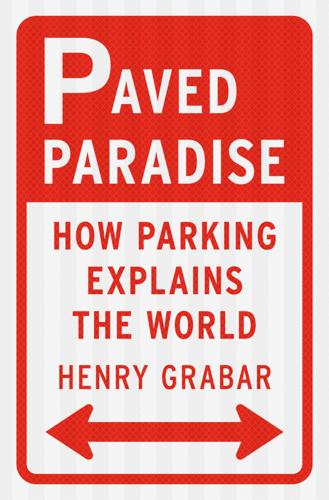
Paved Paradise: How Parking Explains the World
by
Henry Grabar
Published 8 May 2023
Go to note reference in text “blood on your hands”: “Mission Hills Residents Upset over Mayor Gloria’s Decision to Remove over 20 Parking Spaces,” KUSI News San Diego, February 22, 2021, kusi.com/mission-hills-residents-upset-over-mayor-glorias-decision-to-remove-over-20-parking-spaces. Go to note reference in text “My earliest memory”: Donald Shoup, interview with the author, February 20, 2020. Go to note reference in text In 1998, all of America’s: Donald Shoup, The High Cost of Free Parking, updated ed. (New York: Routledge, 2011), 208. Go to note reference in text Cities could require developers: Eran Ben-Joseph, Rethinking a Lot: The Design and Culture of Parking (Cambridge, MA: MIT Press, 2012), 79.
…
Go to note reference in text “articulate, thoughtful, and wrong”: John Van Horn, “The Money Comes from Only One Place,” Parking Today, January 19, 2021, parkingtoday.com/blog/2021/01/the-money-comes-from-only-one-place. Go to note reference in text Portland had been an early adopter: Donald Shoup, “On-Street Parking Management Versus Off-Street Parking Requirements,” in Parking and the City, ed. Donald Shoup (New York: Routledge, 2018), 228. Go to note reference in text In 2021, the city’s largest preschool: Tony Jordan, “Parking over Preschool,” The Parking Minute (blog), June 1, 2021, theparkingminute.com/parking-over-preschool.
…
They are expressions of the same fear that rises into view anytime our parking comes under threat, whether it’s the neighborhood lot or the curb in front or your house. “Thinking about parking seems to take place in the reptilian cortex, the most primitive part of the brain, said to govern instinctive behavior involved in aggression, dominance, territoriality, and ritual display,” writes Donald Shoup, the country’s foremost parking scholar. It’s not hard to grasp what makes parking a fixation: without a place to park, you can never get out of the car. A parking space is nothing less than the link between driving and life itself, the nine-by-eighteen-foot portal through which lies whatever you got in the car to do in the first place.
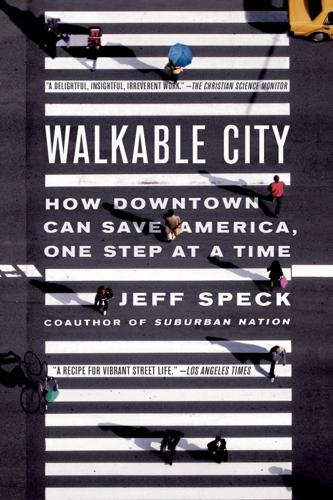
Walkable City: How Downtown Can Save America, One Step at a Time
by
Jeff Speck
Published 13 Nov 2012
; A bargain at $1.2 billion This chapter exists because of one man. He is in his mid-seventies, green-eyed, gray-bearded, and often pictured riding a bicycle. He holds four degrees from Yale in engineering and economics, and teaches at UCLA, where he was chair of the Department of Urban Planning and ran the Institute of Transportation Studies. His name is Donald Shoup and, inside an admittedly small circle, he is a rock star. He is alternately hailed as the “Jane Jacobs of parking policy” and the “prophet of parking.” There is even a Facebook group called “The Shoupistas.”1 Shoup has earned his exalted status by being perhaps the first person to really think about how parking works in cities.
…
From February through July, average peak use never rises above three hundred cars, and at no time does occupancy top 47 percent.21 This was an expensive lesson, a $100,000/month I told you so for the District and its taxpayers—now in its fifth year—as parking revenues fail to cover debt service on the garage. It was just the kick in the pants the city needed to finally rewrite its fifty-year-old regulations to eliminate parking minimums for new shops, offices, and apartments near Metro stations.22 They have decided to leave commercial parking provision to the free market, as Donald Shoup recommends. Even smaller suburban cities are beginning to find that their parking requirements are routinely too high. A useful experiment was conducted in progressive Palo Alto, California. Real estate developers were allowed to cheat on their parking requirements by as much as 50 percent if the land area saved was turned into a natural “landscape reserve” that could be converted to parking if the need arose.
…
I have dozens of people to thank for the information and stories that make up this book. As the text and notes suggest, certain chapters depend heavily on the thought leaders in their subjects, roughly as follows: economics: Chris Leinberger and Joe Cortright; health: Richard Jackson, Howie Frumkin, and Lawrence Frank; parking: Donald Shoup; transit: Yonah Freemark; safety: Dan Burden; biking: Jeff Mapes and Robert Hurst; and urban triage: Andres Duany. While this list is by no means complete, I also received important help from Adam Baacke, Kaid Benfield, Scott Bernstein, Ron Bogle, Tom Brennan, Amanda Burden, Norman Garrick, Robert Gibbs, Alex Gorlin, Vince Graham, Charlie Hales, Blake Kreuger, Bill Lennertz, Matt Lerner, Todd Litman, Mike Lydon, Michael Mehaffy, Charles Marohn, Paul Moore, Wes Marshall, Eileen McNeil, Darrin Nordahl, Brian O’Looney, Eva Otto, David Owen, Jay Primus, Shannon Ramsay, Ginny Seyferth, Christian Sottile, Boo Thomas, Brent Toderian, John Torti, Harriet Tregoning, and Sam Zimbabwe.
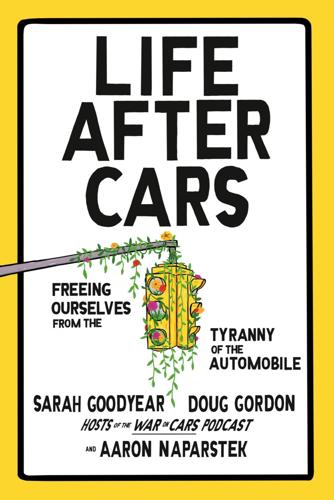
Life After Cars: Freeing Ourselves From the Tyranny of the Automobile
by
Sarah Goodyear
,
Doug Gordon
and
Aaron Naparstek
Published 21 Oct 2025
Brown, Greg Shill, David Zipper, Gretchen Sorin, Sarah Seo, Jessica Valenti, Bob Sorokanich, Kendra Pierre-Louis, Marley Blonsky, George Hahn, Dan Savage, Donald Shoup, Cory Doctorow, Nitish Pahwa, Bernie Wagenblast, Amy Westervelt, Jamelle Bouie, David Roberts, Anil Dash, Adam Conover, Rick Steves, Derek Guy, Rollie Williams, Nicole Conlan, Bill McKibben, Ed Begley Jr., Nick Offerman, and Adam McKay. We also owe a tremendous debt of gratitude to the late professor Donald Shoup, for his wit, wisdom, and the ability to make the invisible visible. Thank you to Susan Mocarski and the entire Cleverhood crew in Providence, Rhode Island, for their longtime sponsorship of the podcast.
…
GO TO NOTE REFERENCE IN TEXT the “kinetic elite”: Mimi Sheller, “Mobility Justice, Climate Migration and the Lessons of Pandemic (Im)mobilities,” online talk at the University of British Columbia Centre for Migration Studies, September 25, 2020, posted September 28, 2020, by UBC Centre for Migration Studies, YouTube, 40 min., 36 sec., migration.ubc.ca/events/event/mimi-sheller-mobility-justice-climate-migration-pandemic-immobilities. GO TO NOTE REFERENCE IN TEXT “I think that parking”: Doug Gordon, host, The War on Cars, podcast, episode 98, “The High Cost of Free Parking,” January 17, 2023, thewaroncars.org/2023/01/17/the-high-cost-of-free-parking-with-donald-shoup. GO TO NOTE REFERENCE IN TEXT Shoup, an engineer: Donald Shoup, The High Cost of Free Parking (Planners Press, 2005), 7. GO TO NOTE REFERENCE IN TEXT “Cities require off-street parking”: Shoup, The High Cost of Free Parking, 8. GO TO NOTE REFERENCE IN TEXT In 2023, journalist Henry Grabar published: Henry Grabar, Paved Paradise: How Parking Explains the World (Penguin Books, 2024).
…
Why are we allowing the “kinetic elite” of drivers to dictate how the rest of us live? In many cases, it all comes down to a one-word answer: parking. Free Parking Isn’t Free “I think that parking is one of the deepest problems that we have in the United States, and in the rest of the world,” Donald Shoup told us. Shoup, an engineer and urban planning professor who died in 2025, is best known as the author of a 2005 book, The High Cost of Free Parking, that has become a seven-hundred-page touchstone for people fighting back against car culture in the twenty-first century. Shoup, born in 1938, brought a generational perspective to our collective obsession with free parking, arguing that it lies at the foundation of our dysfunctional streets.
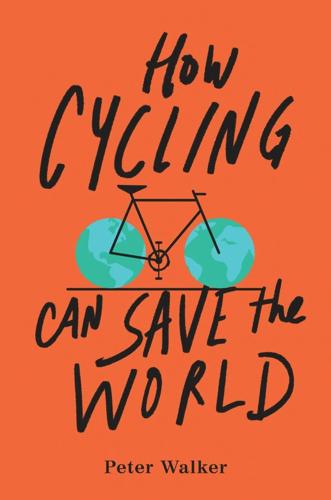
How Cycling Can Save the World
by
Peter Walker
Published 3 Apr 2017
NewsId=OxfordStHighNO2. 8 Reuven Blau, “Mike Bloomberg Vetoes ‘Living Wage’ Bill,” New York Daily News, May 31, 2012, http://www.nydailynews.com/news/politics/mike-bloomberg-vetoes-living-wage-bill-article-1.1087901 9 Interview with the author. 10 “Shoppers and How They Travel,” Sutrans.org, 2006, http://cidadanialxmob.tripod.com/shoppersandhowtheytravel.pdf. 11 City of Copenhagen statistics cited by Cycling Embassy of Denmark: http://www.cycling-embassy.dk/2013/08/26/are-cyclists-good-customers. 12 New York City Department of Transportation, “The Economic Benefits of Sustainable Streets,” 2016, http://www.nyc.gov/html/dot/downloads/pdf/dot-economic-benefits-of-sustainable-streets.pdf. 13 Donald Shoup, “Gone Parkin’,” The New York Times, March 29, 2007. 14 Interview with the author. 15 Shoup, “Gone Parkin’.” 16 Ibid. 17 Donald Shoup, “The High Cost of Minimum Parking Requirements,” in Parking: Issues and Policies (Transport and Sustainability, Volume 5) (2014):87–113, http://shoup.bol.ucla.edu/HighCost.pdf. 18 Donald Shoup, “The High Cost of Free Parking,” Journal of Planning Education and Research, Vol. 17 (1997):3–20, http://www.uctc.net/research/papers/351.pdf. 19 Dr.
…
Everything You Know About Parking Is Wrong “My father never paid for parking, my mother, my brother, nobody,” says George Costanza in one episode of the New York City–based sitcom Seinfeld. “It’s like going to a prostitute. Why should I pay when, if I apply myself, maybe I could get it for free?” This quote is used in a New York Times article13 by Donald Shoup, a professor of urban planning at UCLA. Shoup has devoted much of his career to a single subject, penning two dozen papers on it as well as an eight-hundred-page book, described by its publisher as a “no-holds-barred treatise.” The subject? Yes, parking. Parking, especially free, on-street parking, is one of those areas that many people seem somehow to take both entirely for granted and very, very personally.

Driverless: Intelligent Cars and the Road Ahead
by
Hod Lipson
and
Melba Kurman
Published 22 Sep 2016
Older east-coast cities in the United States, as well as many cities in Europe, were designed and developed before the widespread use of cars. Those older cities have a significantly different vibe than newer cities that developed after cars became ubiquitous. This feeling of old city charm is often called walkability. Needless to say, parking lots don’t increase a city’s walkability, nor its charm. Parking guru Donald Shoup describes the high hidden cost of searching for on-street parking as an activity that “congests traffic, causes accidents, wastes fuel, pollutes the air, and degrades the pedestrian environment.”14 Although estimates vary, people spend anywhere between 3.5 and 14 minutes circling in search of free curbside parking, contributing significantly to the congestion of downtown traffic.
…
Transforming parking space into usable residential and commercial space will be one challenge cities must resolve. Another unintended consequence of friction-free personal mobility is that vibrant city centers might spiral into a slow decline. In his gargantuan tome of parking lore, The High Cost of Free Parking,19 Donald Shoup tells a cautionary tale of the unintended impact of a new six-story parking garage built directly underneath a concert hall in downtown Los Angeles. During the years between 1987 and 2003 while Disney Hall and its parking structure were under construction, the city ran into financial hardship.
…
Fagnant and Kara Kockelman, “Preparing a Nation for Autonomous Vehicles: Opportunities, Barriers and Policy Recommendations for Capitalizing on Self-Driven Vehicles,” Transportation Research Part A 77: 167–181, 2015. 13. Manyika, Chui, Bughin, Dobbs, Bisson, and Marrs, “Disruptive Technologies.” 14. Donald Shoup, “Cruising for Parking,” Transport Policy 13 (2006): 479–486. 15. Alain Bertaud, “Self-Driving Cars in the Evolving Urban Landscape,” Marron Institute Conference on Self-Driving Vehicles, August 25, 2015, http://marroninstitute.nyu.edu/uploads/content/Self_Driving_Vehicles_in_the_Evolving_Urban_Landscape_(Marron).pdf 16.
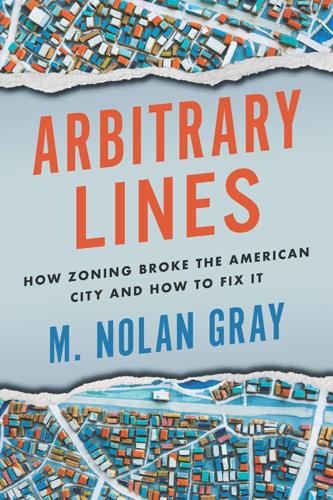
Arbitrary Lines: How Zoning Broke the American City and How to Fix It
by
M. Nolan Gray
Published 20 Jun 2022
They also presuppose that all development will be auto oriented, regardless of whether the actual residents, patrons, or employees arrive by car, privileging sprawl over traditional walkable patterns of development. The ideal path for reform-minded cities is to follow the formula set out by economist and parking policy guru Donald Shoup: correctly price the on-street parking and let developers determine how much off-street parking, if any, is necessary for each development.4 By applying dynamic prices to street parking, in which prices shift in response to demand, cities can ensure that there will always be a few spots available, thereby reducing the incentive to cruise for an unpriced space.
…
Mercatus Research, May 1, 2019, https://www.mercatus.org/publications/urban-economics/do-minimum-lot-size-regulations-limit-housing-supply-texas. 10. More on the role of building regulations in the appendix. 11. We will talk more about minimum parking requirements when we talk about the relationship between zoning and the environment. But for a deep dive into this topic, see Donald Shoup, The High Cost of Free Parking, 2nd ed. (New York: Routledge, 2011). 12. See City of Charlotte, North Carolina, “Code of Ordinances,” Table 12.202 Minimum Required Off-Street Parking by Use. 13. Quoctrung Bui, Matt A. V. Chaban, and Jeremy White, “40 Percent of the Buildings in Manhattan Could Not Be Built Today,” New York Times, March 20, 2016, using data compiled by Stephen Smith and Sandip Trivedi. 14.
…
CHAPTER 3: PLANNING AN AFFORDABILITY CRISIS • For an early exploration of the contemporary housing affordability crisis, see The Rent Is Too Damn High by Matthew Yglesias (Simon and Schuster, 2012, digital only). • For a detailed study of the “how and why” behind zoning delays, see Neighborhood Defenders by Katherine Levine Einstein, David Glick, and Maxwell Palmer (Cambridge University Press, 2019). • For more on the high cost of certain zoning rules, see The High Cost of Free Parking by Donald Shoup (Routledge, 2011). CHAPTER 4: THE WEALTH WE LOST • For an early study of how artificial constraints on housing in wealthy cities are driving economic stagnation, see The Gated City by Ryan Avent (Kindle Single, 2011). • For a broad look at the economic importance of dense cities and the zoning regulations holding them back, see Triumph of the City by Edward Glaeser (Penguin Press, 2011)

Algorithms to Live By: The Computer Science of Human Decisions
by
Brian Christian
and
Tom Griffiths
Published 4 Apr 2016
“plan on expected traffic”: Donald Shoup, personal correspondence, June 2013. implemented in downtown San Francisco: More information on the SFpark system developed by the SFMTA, and its Shoup-inspired dynamic pricing, can be found at http://sfpark.org/how-it-works/pricing/. (Shoup himself is involved in an advisory role.) This program began taking effect in 2011, and is the first project of its kind in the world. For a recent analysis of the effects of the program, see Millard-Ball, Weinberger, and Hampshire, “Is the Curb 80% Full or 20% Empty?” when occupancy goes from 90% to 95%: Donald Shoup, personal interview, June 7, 2013.
…
Motorists feature in some of the earliest literature on the secretary problem, and the framework of constant forward motion makes almost every car-trip decision into a stopping problem: the search for a restaurant; the search for a bathroom; and, most acutely for urban drivers, the search for a parking space. Who better to talk to about the ins and outs of parking than the man described by the Los Angeles Times as “the parking rock star,” UCLA Distinguished Professor of Urban Planning Donald Shoup? We drove down from Northern California to visit him, reassuring Shoup that we’d be leaving plenty of time for unexpected traffic. “As for planning on ‘unexpected traffic,’ I think you should plan on expected traffic,” he replied. Shoup is perhaps best known for his book The High Cost of Free Parking, and he has done much to advance the discussion and understanding of what really happens when someone drives to their destination.
…
Sakaguchi and Tamaki, “On the Optimal Parking Problem in Which Spaces Appear Randomly,” used this continuous formulation and allowed the destination to be unknown. MacQueen and Miller, “Optimal Persistence Policies,” independently considered a continuous version of the problem that allows circling the block. “I ride my bike”: Donald Shoup, personal interview, June 7, 2013. Forbes magazine identified Boris Berezovsky: Forbes, “World’s Billionaires,” July 28, 1997, p. 174. one of a new class of oligarchs: Paul Klebnikov, “The Rise of an Oligarch,” Forbes, September 9, 2000. “to hit just once, but on the head”: Vladimir Putin, interview with the French newspaper Le Figaro, October 26, 2000.
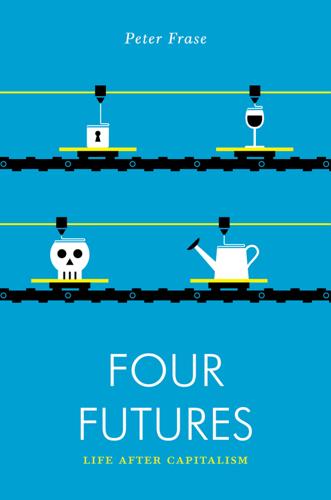
Four Futures: Life After Capitalism
by
Peter Frase
Published 10 Mar 2015
In some areas of New York, most of the traffic on the streets is people looking for parking, wasting their time while creating pollution and congestion. As an alternative, some cities are experimenting with various schemes for pricing street parking, often under the influence of UCLA parking theorist Donald Shoup.21 One of Shoup’s key themes is that urban governments should avoid under-pricing street parking, because to do so leads to Soviet-style shortages as described above, along with tedious rationing rules such as two-hour limits and the like. Under the influence of this theory, the city of Los Angeles decided to implement a wireless smart-metering system called LA Express Park.
…
“A major virtue of centrally planned societies,” he says, is that “it is easy to see who is responsible for what goes wrong.”24 This is a precondition for democratic accountability, because “only a critique of market mystification will enable us to put the blame where it belongs, which is to say—on the capitalist market as such and the class that rules over it.”25 But this critique too fails. Despite the presence of price signals, and a market, it is no mystery who is responsible for the new regime of fluctuating meter prices: the city of Los Angeles, urged on by its adviser Donald Shoup. Indeed, it is the very visibility of the planners that makes projects like this controversial among those who take their right to free parking for granted and who oppose policies like congestion pricing that would mitigate traffic by charging drivers for entering busy areas. This is also part of what makes climate policies such as a carbon tax vulnerable to right-wing attack: whatever its “market-based” costume, everyone knows that the policy begins with government lawmakers and bureaucrats.

Streetfight: Handbook for an Urban Revolution
by
Janette Sadik-Khan
Published 8 Mar 2016
In the Jackson Heights and Park Slope neighborhoods, where we increased the parking rate during the busiest hours, the duration that people parked at these spots decreased and the number of vehicles able to park increased by 20 percent, thus helping businesses by making it easier for new customers and delivery trucks to find parking. The world’s Potentate of Parking Policy, Donald Shoup, now retired from UCLA, called for a parking strategy that would set rates high enough to keep a space or two available on streets at any given moment—what he called the 85 percent solution, the ideal maximum occupancy of parking spaces on a given street. While motorists reflexively balk at paying more to park and are enticed into “free parking” lots behind stores and restaurants, hidden costs are involved there as well.
…
streetlights will be LEDs: City of New York, press release, “Mayor Bloomberg and Transportation Commissioner Sadik-Khan Announce All 250,000 Street Lights in New York City Will Be Replaced with Energy-Efficient LEDs by 2017, Reducing Energy Consumption and Cost,” October 24, 2013, accessed August 11, 2015, www1.nyc.gov/office-of-the-mayor/news/343-13/mayor-bloomberg-transportation-commissioner-sadik-khan-all-250-000-street-lights-in#/0. 95 percent of the time: Donald Shoup, The High Cost of Free Parking (New York: APA Planners Press, 2011), 624. 500 million parking spaces: Jeff Speck, Walkable City: How Downtown Can Save America, One Step at a Time (New York: North Point Press/Farrar, Straus and Giroux, 2012), iBooks edition. most extreme example: Amy Zimmer, “$1M Parking Spaces Among High-End Amenities for Cars at Manhattan Apts.,” DNAinfo, May 5, 2015, accessed August 11, 2015, www.dnainfo.com/new-york/20150505/tribeca/motor-courts-valets-1m-spots-parking-as-ultimate-manhattan-amenity.
…
below 96th Street: New York City Department of Transportation, “Street Parking Rates,” accessed August 11, 2015, www.nyc.gov/html/dot/html/motorist/parking-rates.shtml. thus helping businesses: New York City Department of Transportation, “Park Smart 2.0,” 2014, accessed August 11, 2015, www.nyc.gov/html/dot/downloads/pdf/2014-10-park-smart-road-show.pdf. 85 percent solution: Donald Shoup, “Cruising for Parking,” Access (Spring 2007, issue 30), accessed August 11, 2015, http://shoup.bol.ucla.edu/CruisingForParkingAccess.pdf. That’s 250,000 spaces: Institute for Transportation and Development Policy, “The Urgent Need to Improve Parking in Mexico City,” September 26, 2014, accessed August 5, 2015, www.itdp.org/urgent-need-improve-parking-mexico-city/.
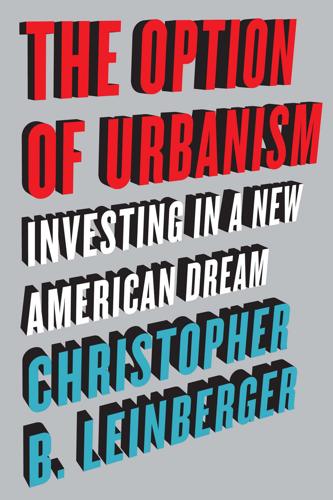
The Option of Urbanism: Investing in a New American Dream
by
Christopher B. Leinberger
Published 15 Nov 2008
For commercial development, the planning almost always means that the parking solution is an at-grade surface lot in front of the building. The building is set back from the street, so anyone driving by can see that there is plenty of parking available. Zoning codes often require enough C O N S E Q U E N C E S O F D R I VA B L E S U B - U R B A N G R O W T H | 6 7 parking for the times of its heaviest use. According to Donald Shoup, author of The High Cost of Free Parking, parking policies are responsible for much of the look of development today.6 In summary, the benefits of drivable sub-urbanism have come down to: terrestrial affiliation—having a piece of land to call one’s own, lower costs, due to inherently cheaper construction and infrastructure subsidies, more land, particularly if one is willing to “drive until you qualify,” lower community taxes, improved public schools, privacy, perceived safety, and abundant free parking.
…
For a restaurant or movie theater, you need between eight and ten parking spaces per 1,000 square feet of building or 2,400–3,500 square feet of parking for every 1,000 square feet of building. Conventional apartment buildings need 2.5 parking spaces per unit, or a parking ratio of about two spaces for every 1,000 square feet. However, Donald Shoup, author of the High Price of Free Parking, contended that none of these parking ratios are based on any scientific inquiry about actual parking needs, and are almost universally inflated, working under the assumption that you can never have too much parking. Donald C. Shoup, The High Cost of Free Parking (Chicago: Planners Press American Planning Association, 2005).
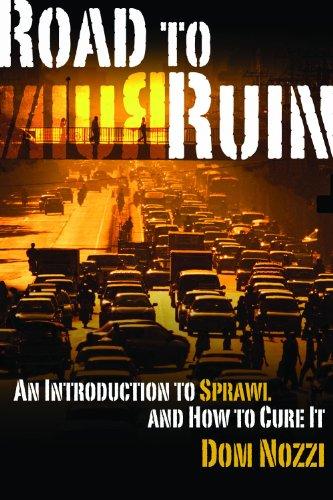
Road to ruin: an introduction to sprawl and how to cure it
by
Dom Nozzi
Published 15 Dec 2003
However, developers increasingly tend to oversupply parking—often exceeding even the generous requirements of most communities. For example, a study in the Seattle region found that even during peak periods, the parking supply for offices was 36 percent higher than average demand.5 Today, it is typical to provide parking for the “20th busiest hour of use,” but Donald Shoup notes that this leaves at least half of a shopping center’s parking vacant for at least 40 percent of the year.6 Further evidence on the oversupply of suburban parking includes a study of east and west coast business parks. Here, 47 percent parking occupancy was found when the office buildings were well leased.7 Such parking requirements have only encouraged sprawl, for developers can adhere to them less expensively in land-rich suburbs than in downtown areas.
…
The policies have been consistent with the social values of the time.”8 Minimum parking requirements—that “X” number of parking spaces must be provided per given size of building—are law in nearly every American community. It is a testament to our love affair with cars, yet they tend to breed car trips that would not have occurred had there not been so much free parking provided. Indeed, Donald Shoup calls minimum parking requirements a “fertility drug for cars.” The relentless demand for more parking in many downtowns harks to the old Vietnam adage that “we must destroy the village to save it.” LEAVE THE DRIVING TO US: TRANSIT-FRIENDLY COMMUNITIES Greyhound’s slogan for years went something like “Take the bus . . .

Bikenomics: How Bicycling Can Save the Economy (Bicycle)
by
Elly Blue
Published 29 Nov 2014
Bicycling customers voted with their wallets, and business owners quickly observed that a quadrupling or more of customer parking capacity is nothing to sneeze at. At the beginning of 2011, there were more than 60 corrals, with a waiting list two years long. As of April, 2013, Portland has 97 bike corrals and a long waiting list remains.90 “Minimum parking requirements act like a fertility drug for cars.” —Donald Shoup An astonishing amount of space in most urban cores is dedicated to the publicly-subsidized storage of private property. But parking is not just about vehicle storage—it’s about the shape and character of a community. It’s about what public space is used for, who has access to it, and who pays.
…
Instead, the constant need for maintenance drains public and private coffers—and this cost is overshadowed by the opportunity cost of what could be built in our cities instead. Yet all this space is given away freely as a standard practice. In the US, 99% of trips by car end up in a free spot.95 The value of that land—and to a lesser extent, the costs of paving, sweeping, policing, and maintaining it—makes parking one of the largest subsidies going. Donald Shoup, the world’s foremost expert on all things parking, calculates that the average parking subsidy to a U.S. commuter who drives to work is $5 per work day. Shoup estimated the entire parking subsidy of free parking to be at least $127 billion in 2002—an amount that would put a nice dent in the cash-strapped transportation budget.96 We are quite literally paying people to drive.

Human Transit: How Clearer Thinking About Public Transit Can Enrich Our Communities and Our Lives
by
Jarrett Walker
Published 22 Dec 2011
For shopping destinations, the cost of parking is considered a basic cost of doing business, so it’s hidden in the prices the customer pays. For employment destinations, free parking is an expensive benefit to certain employees but not to others. The work of making these subsidies visible, and accounting for them fairly, is only just beginning. The definitive study of the problem is Donald Shoup’s book The High Cost of Free Parking.2 Cars also impose negative impacts that are not connected directly to user costs paid by motorists. These include public health impacts (obesity, accident rates), several kinds of pollution, greenhouse gas emissions, and runoff from the hard surfaces of roads and parking lots.
…
For example, Randal O’Toole writes: “Unlike transit, [US] interstate highways were funded out of user feeds, creating a feedback loop: if planners built more interstates that people wanted to use, users would pay the taxes needed to fund the roads.” Randal O’Toole, Fixing Transit: The Case for Privatization, Policy Analysis 670, Cato Institute, www.cato.org/pubs/pas /PA670.pdf (accessed June 30, 2011). Donald Shoup, The High Cost of Free Parking (Chicago: Planners Press, 2005). See Martin Wachs, “Improving Efficiency and Equity in Transportation Finance,” Brookings Institution (2003), http://www.brookings.edu/reports NOTES | 235 4. 5. 6. 7. /2003/04transportation_wachs.aspx (accessed July 6, 2011).
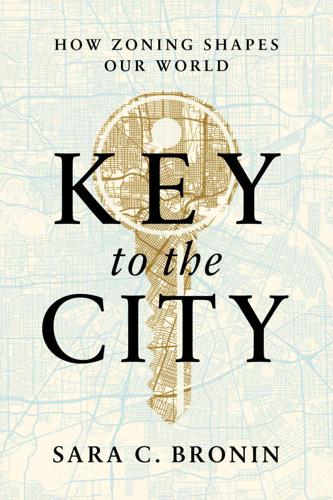
Key to the City: How Zoning Shapes Our World
by
Sara C. Bronin
Published 30 Sep 2024
In this way, the required parking for a unit that has been built renders another unit impossible to build. Beside making housing scarcer, parking mandates also make it more expensive, disproportionately hurting people with lower incomes—including those without access to cars to begin with. Lest you think that an empty space must at least be cheap to develop, a 2014 study by UCLA professor Donald Shoup found that it costs a jaw-dropping $34,000 to build a single underground parking space and $24,000 to build one in a parking structure, price tags that have surely risen since. Parking requirements add to maintenance costs, too, since lots must be repaved, lighting replaced, and striping repainted.
…
Murphy, Karina McDonald-Lopez, and Alix Gould-Werth, “Transportation Insecurity in the United States: A Descriptive Portrait,” Socius: Sociological Research for a Dynamic World 8, no. 10 (2022). 95 the bank purchased adjacent properties: Aaron Qualls, “One Line of Your Zoning Code Can Make a World of Difference,” Strong Towns, January 31, 2019. 95 $50 million a year: Bryan P. Blanc et al., “Effects of Urban Fabric Changes on Real Estate Property Tax Revenue: Evidence from Six American Cities,” Transportation Research Record 2543, no. 1 (2014). 95 it costs a jaw-dropping: Donald Shoup, “The High Cost of Minimum Parking Requirements,” Parking: Issues and Policies, Transport and Sustainability Series 5 (2014). 95 Developers pass these costs on to tenants or buyers: Allen Greenberg, “How New Parking Space May Effectively Increase Typical U.S. Urban Housing Total Unit Costs by $52,000 to $117,000” (working paper, Federal Highway Administration Office of Policy, 2005); C.

Straphanger
by
Taras Grescoe
Published 8 Sep 2011
Downtown Los Angeles requires, at minimum, fifty times more parking than downtown San Francisco allows at maximum. Which means that while most San Franciscans ride transit to get to work, in Los Angeles land is gobbled up for the needs of the car, creating pedestrian-repelling dead zones. “What sets downtown L.A. apart from other cities is not its sprawl,” writes UCLA urban planning professor Donald Shoup, “or its human density, but its high human density combined with its high parking density.” The math is simple: an office worker requires, on average, 250 square feet of space, whereas his car requires 400 square feet. A downtown where most people commute by automobile needs to set aside one and a half times as much land for cars as for people.
…
Saving our cities from the automobile is going to involve welcoming transit-oriented development, infill in old central city neighborhoods, and multifamily buildings and apartments in what were once low-density areas. It will mean brandishing the stick of congestion and more expensive parking to discourage drivers—a simple way to start would be to heed the “Shoupistas,” the followers of University of California professor Donald Shoup, and turn parking minimums into maximums in new developments—while dangling the carrot of safe, comfortable, and frequent transit to draw new riders. For cities, it will involve building high-quality bicycle lanes, pedestrian-oriented urban spaces, and the best public transport money can buy—without cutting back on the frequency or quality of bus service essential to keep rapid transit working.
…
Bloomington: Indiana University Press, 2008. Kwitny, Jonathan. “The Great Transportation Conspiracy: A Juggernaut Named Desire.” Harper’s, September 1981. Longstreth, Richard. City Center to Regional Mall: Architecture, the Automobile, and Retailing in Los Angeles, 1920–1950. Cambridge, Mass.: MIT Press, 1997. Manville, Michael, and Donald Shoup. “People, Parking, and Cities.” Access, No. 30, 2007. Marshall, Alex. How Cities Work: Suburbs, Sprawl, and the Roads Not Taken. Austin: University of Texas Press, 2005. Mayo, Morrow. Los Angeles. New York: Knopf, 1933. McDonald, Patrick Range. “Black Lungs Lofts.” LA Weekly, March 10, 2010.
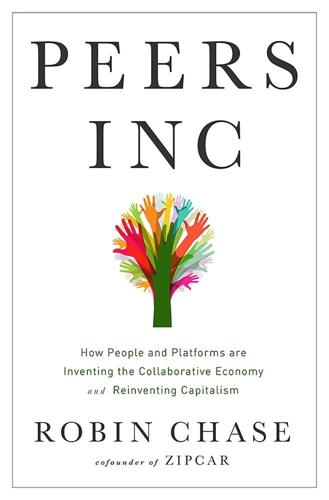
Peers Inc: How People and Platforms Are Inventing the Collaborative Economy and Reinventing Capitalism
by
Robin Chase
Published 14 May 2015
He’d walk back to the car, unlock the door, and then fill out a form that was left in the glove box: start time, stop time, start odometer, stop odometer. When he was done he’d park back in front of my house, leave the filled-out form in the glove compartment, lock the car door, and return the key to under the pillow. 4. Ruth Eckdish Knack, “Pay as You Park: UCLA Professor Donald Shoup Inspires a Passion for Parking,” Planning, May 2005, http://shoup.bol.ucla.edu/PayAsYouPark.htm. 5. See the spreadsheet by Jeremiah Owyang at https://docs.google.com/spreadsheets/d/12xTPJNvdOZVzERueyA-dILGTtL_KWKTbmj6RyOg9XXs/edit#gid=1884009904. CHAPTER 2: EXCESS CAPACITY 1. “Owning and Operating Your Vehicle Just Got a Little Cheaper According to AAA’s 2014 ‘Your Driving Costs’ Study,” AAA NewsRoom, May 9, 2014, http://newsroom.aaa.com/2014/05/owning-and-operating-your-vehicle-just-got-a-little-cheaper-aaas-2014-your-driving-costs-study. 2.
…
Zoe Fox, “The Average Smartphone User Downloads 25 Apps,” Mashable, September 5, 2013, http://mashable.com/2013/09/05/most-apps-download-countries. 12. Luis von Ahn, “Massive-Scale Online Collaboration,” TEDxCMU talk by Luis Von Ahn, April 2011 (transcribed December 2011), www.ted.com/talks/luis_von_ahn_massive_scale_online_collaboration/transcript?language=en. 13. Ruth Eckdish Knack, “Pay as You Park: UCLA Professor Donald Shoup Inspires a Passion for Parking,” Planning, May 2005, http://shoup.bol.ucla.edu/PayAsYouPark.htm. 14. Gabriel Lewenstein, “Bogotá Ciclovía,” ADB KA Case Study, Institute for Transport and Development Policy, December 20, 2013, https://go.itdp.org/pages/viewpage.action?pageId=38109749. 15. Analysis from Wikipedia, “List of Largest Consumer Markets,” http://en.wikipedia.org/wiki/List_of_largest_consumer_markets, using the UN’s National Accounts Main Aggregates Database, http://unstats.un.org/unsd/snaama/selbasicFast.asp. 16.
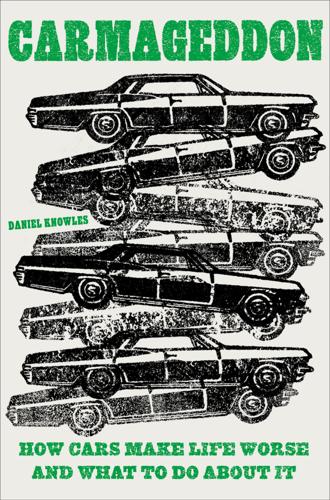
Carmageddon: How Cars Make Life Worse and What to Do About It
by
Daniel Knowles
Published 27 Mar 2023
If each one is around 250 square feet, that would be equivalent to two-thirds of the land. (Obviously, there are a lot of multi-level garages.) A majority of Downtown LA, in effect, is given over to cars. There is one man, a softly spoken, bearded academic economist at the University of California, Los Angeles, who has documented this madness. His name is Donald Shoup, and I interviewed him at the UCLA campus, a lovely, green expanse that is only marginally—by the standards of the city—wrecked by its plentiful car parking (which is, as Shoup notes, not free but in fact carefully priced). I had been wondering why LA, a city that these days is dominated by liberals, had so struggled to persuade people to use its public transport network.
…
I cannot imagine that many roads being closed soon in many American cities. (Though New York City has managed it a little, as have some more surprising places, such as Denver, Colorado.) Similarly, building lots of houses without parking is proving tricky in many cities. But even there, there are gentle policies that are making a difference. Donald Shoup, the UCLA parking supremo, proposed one idea that, though modest, actually got passed into law in California more than thirty years ago. It is called “parking cash out,” and how it works is that employers who offer free parking to their employees are required by law to offer them the cash equivalent of the cost of the parking space if they do not use it.
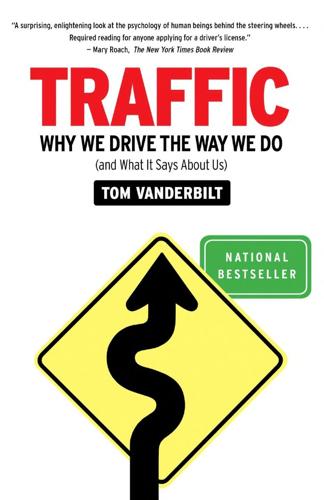
Traffic: Why We Drive the Way We Do (And What It Says About Us)
by
Tom Vanderbilt
Published 28 Jul 2008
What you may not realize, when you find yourself driving on a crowded city street, is that many of your fellow drivers on that crowded street are simply cruising for parking. The problem is not so much the lack of street parking but the plentiful abundance of free or underpriced parking. This finding has sparked the fiery crusade of Donald Shoup, a bearded, bow-tied, and bicycling economist at the University of California, Los Angeles, and the author of a seven-hundred-page, cult-sensation tome titled The High Cost of Free Parking. The mantra used by Shoup, and his growing legion of supporters (dubbed “Shoupistas”), is the “85 percent solution.”
…
Thanks to Chris Hughes, Claire Sigman, and Shane Novicki at Clear Channel’s Airwatch in Orange County, as well as Vera Jimenez at CBS2 in Los Angeles, for dishing on L.A. traffic in all its infinite varieties. Sergeant Joseph Zizi of the California Highway Patrol gave me an intimate view into patroling the highway and answered any number of statistical queries. At UCLA, a number of people across different departments shared their expertise: Donald Shoup, Jay Phelan, Brian D. Taylor, Randall Crane, and Jack Katz. At Stanford University, thanks to Sebastian Thrun and Michael Montemerlo. In the New York region, thanks are due to Kay Sarlin, Ryan Russo, and Michael Primeggia of the New York City Department of Transportation. Sam “Gridlock Sam” Schwartz of Sam Schwartz PLLC and Michael King at Nelson/Nygaard provided invaluable insight and commentary on New York traffic.
…
Montello, “The Perception and Cognition of Environmental Distance: Direct Sources of Information,” in Spatial Information Theory: A Theoretical Basis for GIS (Berlin: Springer, 1997), pp. 297–311, and Lorin J. Staplin and Edward K. Sadalla, “Distance Cognition in Urban Environments,” Professional Geographer, vol. 33 (1981), pp. 302–10. is “good enough”: See Herbert Simon, Administrative Behavior, 4th ed. (New York: Free Press, 1997). of their time parked: Donald Shoup, The High Cost of Free Parking (Chicago: American Planning Association, 2005), p. 6. subsidized parking spots: Bruce Schaller, “Free Parking, Congested Streets,” March 1, 2007; available at http://www.schallerconsult.com/pub/index.htm. “as has cycle parking space”: City of Copenhagen, Traffic and Environmental Plan 2004, p. 16.
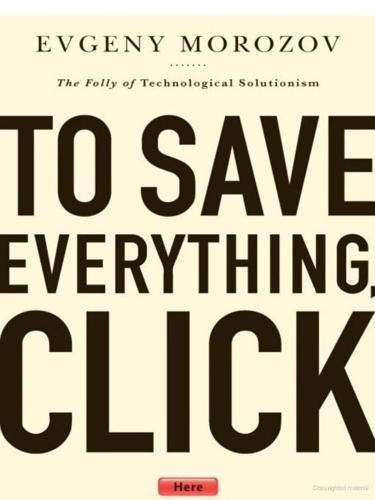
To Save Everything, Click Here: The Folly of Technological Solutionism
by
Evgeny Morozov
Published 15 Nov 2013
Second, a driver would have no way to overstay the posted time limit by paying several times: the sensors would identify each car and, once the permitted time was up, tell the meter not to accept further payments. Many would welcome even these two changes. Why not block those who want to trick the system and overstay the limit? After all, free parking is anything but free. As Donald Shoup, professor of urban planning at the University of California, Los Angeles, shows in his The High Cost of Free Parking, if people paid the fair market price for parking, they might drive less, and the perpetually cash-deprived cities might raise more money too. Seems like a win-win. But ought we to consider other aspects of the Santa Monica initiative?
…
Under this new scheme, the driver would be compelled to weigh the pros and cons and decide what was more important: fighting congestion and helping the city or being a good fellow citizen and helping those in need with their parking bill. Suddenly, the driver must think about the severity of the parking problem and confront the factors creating it—perhaps enough so to order a copy of Donald Shoup’s book. Whereas it was previously impossible to get the driver to show virtuous behavior—“virtue” was just an accident of the system’s design—now the driver is forced to deliberate about which course of action would be more virtuous. By comparison, the actual scheme—where the decision is made on the driver’s behalf—now looks too restraining and paternalistic.
…
Chapter 9: Smart Gadgets, Dumb Humans 318 “The moral law is in our hearts”: Bruno Latour, “Morality and Technology: The End of the Means,” Theory, Culture & Society 19, no. 5–6 (December 1, 2002): 247–260. 318 “City Expands Parking Meter Sensors”: “City Expands Parking Meter Sensors,” May 8, 2012, http://www.smgov.net/Main/News_Tab/City_Expands_Parking_Meter_Sensors.aspx; also see Nate Berg, “Did Parking Meters Just Get Too Smart?,” May 15, 2012, http://www.theatlanticcities.com/commute/2012/05/did-parking-meters-just-get-too-smart/2007. 319 As Donald Shoup . . . shows: Donald C. Shoup, The High Cost of Free Parking (Chicago: American Planning Association [Planners Press], 2005). 319 To return to Albert Hirschman’s futility-perversity-jeopardy triad: Albert O. Hirschman, The Rhetoric of Reaction: Perversity, Futility, Jeopardy (Cambridge, MA: Belknap Press of Harvard University Press, 1991). 322 “to be an engineer . . . is not enough”: quoted in Philip Brey, Adam Briggle, and Edward Spence, The Good Life in a Technological Age (London: Routledge, 2012), 330. 323 what Neil Postman called “technopoly”: Neil Postman, Technopoly: The Surrender of Culture to Technology, 1st ed.
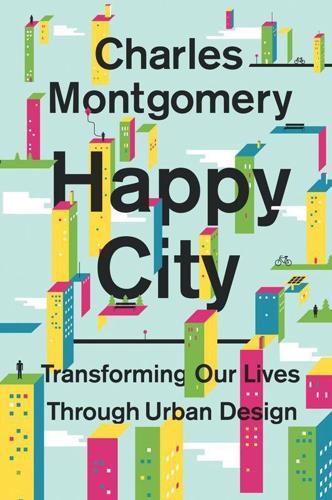
Happy City: Transforming Our Lives Through Urban Design
by
Charles Montgomery
Published 12 Nov 2013
Aside from creating a huge burden for the building’s tenant, the Los Angeles Philharmonic (which is contractually bound to put on an astounding 128 concerts each winter season in order to pay the debt service on the garage), the structure has utterly failed to revive area streets. This is because people who drive to the Disney Hall never actually leave the building, noted Donald Shoup, a professor of urban planning at the University of California, Los Angeles, and the world’s foremost expert on the effects of parking. “The full experience of an iconic Los Angeles building begins and ends in its parking garage, not in the city itself,” Shoup and his graduate student Michael Manville wrote in a damning analysis.
…
influenced by noise: Jha, Alok, “Noise of Modern Life Blamed for Thousands of Heart Deaths,” The Guardian, August 22, 2007, www.guardian.co.uk/science/2007/aug/23/sciencenews.uknews (accessed March 3, 2012). field experiments: Cohen, S., and S. Spacapan, “The Social Psychology of Noise,” in Noise and Society, ed. D. M. Jones and A. J. Chapman (Chichester, U.K.: Wiley, 1984): 221–45. “The full experience”: Manville, Michael, and Donald Shoup, “People, Parking, and Cities,” Access, 2004, http://shoup.bol.ucla.edu/People,Parking,Cities.pdf (accessed March 3, 2012). 8. Mobilicities I: How Moving Feels, and Why It Does Not Feel Better Robert Burton: Burton, Robert, The Anatomy of Melancholy, ed. Jackson Holbrook (London: Rowman and Littlefield, 1975), 71.

Retrofitting Suburbia, Updated Edition: Urban Design Solutions for Redesigning Suburbs
by
Ellen Dunham-Jones
and
June Williamson
Published 23 Mar 2011
The mix of uses and tripled density at Belmar address this goal, as well as eight regional bus routes that now thread through Belmar’s streets. In addition, Continuum built structured parking in the first phase (probably too much as it turns out, according to a parking audit performed by Continuum). In a reversal of conventional thinking, and in line with the theories of Donald Shoup, structured parking is free while on-street parking is metered as a short-term parking management tool, not a revenue source.13 (See Figure 8–6.) Q & A with Lakewood City Manager Mike Rock Q. What do you think of the suburbs? A. Suburbs are uniformly boring. Q. So how did you go about making the Villa Italia Mall retrofit not boring?
…
&include=/CP/lra/LRAHOME.cfm. 9 Kieran Nicholson, “Villa Italia Successor Wins Tax: Improvement Fee Will Pay Off Developer’s Bonds,” Denver Post, December 20, 2001, B-02. 10 Quoted in Jason Miller, “Another Greyfield Gone: Belmar in Lakewood, Colorado,” The Town Paper, Fall 2005. 11 When the green-bonds provision was first added to the 2004 energy bill, critics derided it as “Hooters and polluters” because a Louisiana development that would benefit from the bonds included a Hooters restaurant. Mike Soraghan, “Tax Bill Would Benefit Belmar Developers,” Denver Post, October 8, 2004, C-01. 12 David Manfredi, interview by Ellen Dunham-Jones, Boston, Massachusetts, October 15, 2007. 13 Donald Shoup, The High Cost of Free Parking (Washington, DC: American Planning Association, 2005). 14 For more on suburban morphology, see Brenda Case Scheer, “The Anatomy of Sprawl,” Places 14:2 (Fall 2001): 28–37. 15 Robert Steuteville, “How to Mitigate the Impact of Big Box Stores,” New Urban News, July/August 2006. 16 Quoted in Jared Jacang Maher, “Urban Flight: Rents Are Rising on South Broadway.
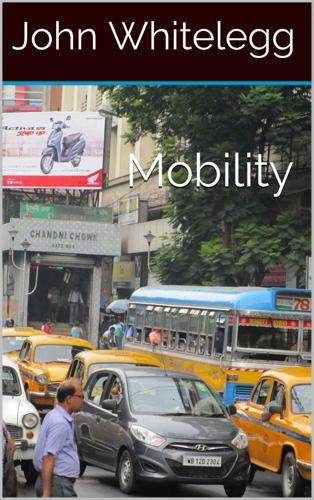
Mobility: A New Urban Design and Transport Planning Philosophy for a Sustainable Future
by
John Whitelegg
Published 1 Sep 2015
This is so silly that I assume there is no need to explain why it is silly. It is at the same time approximately the situation we have in the USA with vast amounts of space allocated to highways and parking lots and little attention (with some honourable exceptions) given to walking, cycling and public transport. Donald Shoup at Berkeley has described this as “the high cost of free parking” and has pointed out that the spending on highway and parking capacity is cumulatively greater than the US defense budget (Shoup, 2005): “All this free parking is charity for cars. In 2002, the total subsidy for off-street parking was somewhere between $127 billion and $374 billion a year.
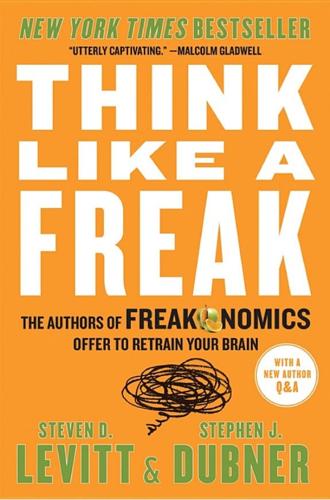
Think Like a Freak
by
Steven D. Levitt
and
Stephen J. Dubner
Published 11 May 2014
. / 174 Worldwide traffic deaths: Most of the statistics in this section are drawn from World Health Organization and NHTSA reports. / 175 In many U.S. cities, 30 to 40 percent of the downtown surface area is devoted to parking: See Stephen J. Dubner, “Parking Is Hell,” Freakonomics Radio, March 13, 2013; Donald Shoup, The High Cost of Free Parking (American Planning Association, 2011); Eran Ben-Joseph, ReThinking a Lot: The Design and Culture of Parking (Massachusetts Institute of Technology, 2012); Catherine Miller, Carscape: A Parking Handbook (Washington Street Press, 1988); John A. Jakle and Keith A. Sculle, Lots of Parking: Land Use in a Car Culture (University of Virginia, 2004). / 176 Nearly 3 percent of the U.S. workforce . . . feed their families by driving: From a May 2012 Bureau of Labor Statistics report.
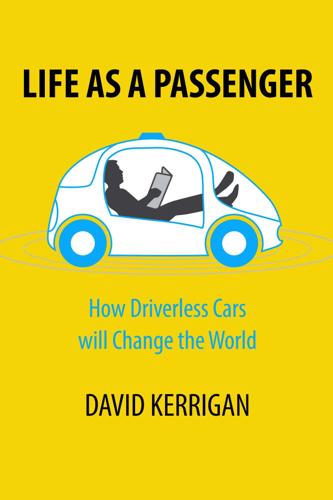
Life as a Passenger: How Driverless Cars Will Change the World
by
David Kerrigan
Published 18 Jun 2017
Because of the focus on cars and co-located parking (where the car is stored close to its owner) as a solution in urban planning in recent decades, the distance between people and their destinations is typically greater than before, so they spend more time in traffic or on the bus; parking is baked into the price of most housing, goods, and services, so we pay more for all of them (hundreds of dollars per month, at least); and since we've built our city around the assumption that most people will drive, most people do—because all the incentives point in that direction. Parking & Congestion According to Donald Shoup,[44] Professor of Urban Planning at the University of California, Los Angeles, a surprising amount of traffic congestion isn’t caused by people who are on their way somewhere. Rather it is caused by people who have already arrived. Our streets are congested, in part, by people who have gotten where they want to be but are cruising around looking for a place to park.
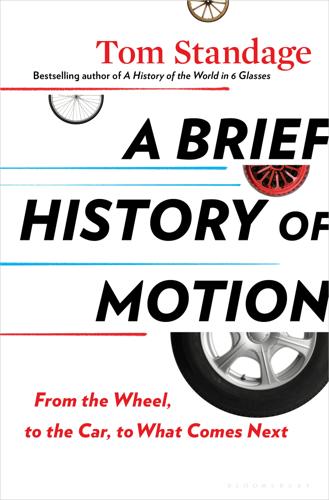
A Brief History of Motion: From the Wheel, to the Car, to What Comes Next
by
Tom Standage
Published 16 Aug 2021
I am grateful to the historians, urbanists, and technologists who have helped me along the way by sharing their expertise and knowledge so generously; any errors are of course entirely my fault. Thank you to Richard Bulliet, Eric Morris, Joel Tarr, Kassia St. Clair, Stephen Davies, Tom Wheeler, Tony Hadland, Peter Norton, and Brian Ladd; to Joel Kotkin, Donald Shoup, Shlomo Angel, Alan Berger, Jarrett Walker, William Riggs, Richard Florida, and Chenoe Hart; and to Sebastian Thrun, Elon Musk, Chris Urmson, Sterling Anderson, Oliver Cameron, Stan Boland, and Karl Iagnemma. Finally, I wish to express my gratitude to my parents for indulging my obsession with cars from a young age, to my son, Miles, for all the car hunts in the automotive jungles of Knightsbridge and Goodwood, to my daughter, Tate, for her classical expertise and sharp eye as an editor, and finally, for putting up with all the horse manure stories, to my wife, Kirstin, to whom this book is dedicated.
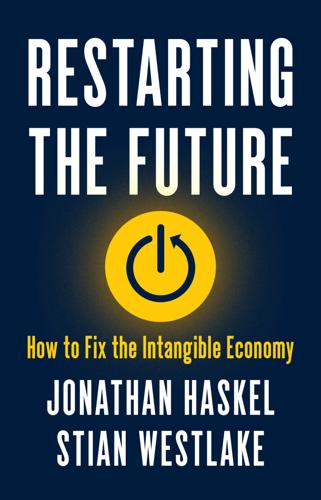
Restarting the Future: How to Fix the Intangible Economy
by
Jonathan Haskel
and
Stian Westlake
Published 4 Apr 2022
Equally, the 2020 Black Lives Matter protests in the United States, which have cast light on the power of police unions and the extensive legal protections that some police forces enjoy, may have the effect of mobilising enough opposition to have them reduced. As the case for improving city institutions strengthens, politicians may be more willing to spend political capital on it. As with planning, good policy design can help make the politics easier. Donald Shoup, an economist who has spent two decades studying the malign effects of free parking and minimum parking requirements on American cities (in Los Angeles County, parking spaces are 14 percent of the county’s incorporated land area and 1.4 times larger than the area of the roadway system), has argued that one way to make the case for charging for parking is to ensure that the revenues are spent locally.28 Street trusts would give a share of road-user charges to the specific streets that people drive down.

Road to Nowhere: What Silicon Valley Gets Wrong About the Future of Transportation
by
Paris Marx
Published 4 Jul 2022
Rosenbaum, “For the Highway Lobby, a Rocky Road Ahead,” New York Times, April 2, 1972, Nytimes.com. 27 Brown, Morris, and Taylor, “Planning for Cars in Cities,” p. 172. 28 Hall, Cities of Tomorrow. 29 Sharon Zukin, “Jane Jacobs (1916–2006),” The Architectural Review, October 26, 2011, Architectural-review.com. 30 Ibid. 31 Southworth and Ben-Joseph, “Street Standards and the Shaping of Suburbia,” p. 73. 32 Laura Hale, “Happy 60th Birthday, Interstate Highway System!,” American Society of Civil Engineers, June 29, 2016, Infrastructure reportcard.org. 33 Shill, “Should Law Subsidize Driving?” 34 See ibid. for updated figures taken from Donald Shoup, The High Cost of Free Parking, Routledge, 2005. 35 Ibid., p. 502. 36 World Health Organization, “Road Traffic Injuries,” June 21, 2021, who.int. 37 David Shepardson, “U.S. Traffic Deaths Soar to 38,680 in 2020; Highest Yearly Total since 2007,” Reuters, June 3, 2021, Reuters.com. 38 Fabio Caiazzo et al., “Air Pollution and Early Deaths in the United States.
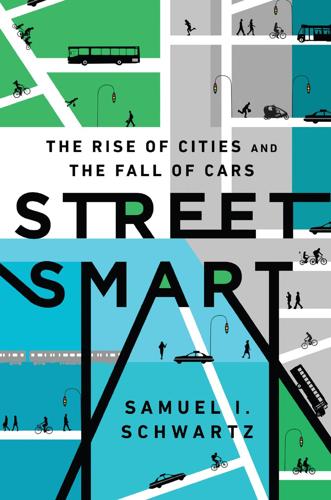
Street Smart: The Rise of Cities and the Fall of Cars
by
Samuel I. Schwartz
Published 17 Aug 2015
Or, more accurately, addiction to parking. Though parking is a lot less flashy than automated electric trains, or interactive signs that help in finding routes, it’s hard to overstate its importance in building a successful multimodal transportation system or, for that matter, turning streets back into livable places. Back in 1997, Donald Shoup, then at the Department of Urban Planning at UCLA, wrote one of the most cited papers in the entire transportation literature, “The High Cost of Free Parking,” which demonstrated the flaws in setting minimum parking requirements for every land use—for every house, or store, or office building—based on peak demand.

What Algorithms Want: Imagination in the Age of Computing
by
Ed Finn
Published 10 Mar 2017
All of these markets were, of course, already technological, but they were largely inaccessible to direct algorithmic management until the advent of smartphones and ubiquitous sensors enabling the close monitoring of human and financial resources. In terms of labor and surplus value, what the algorithms of Uber, Airbnb, and their cohort capitalize on is the slack infrastructure of modern consumption: empty cars, unused bedrooms, and under-employed people. According to UCLA urban planning researcher Donald Shoup, the average car is parked 95 percent of the time; why not exploit that latent resource?34 Viewed more broadly, the interface layer is a colonization of the quiet backwaters of contemporary capitalism—the remobilization of goods and spaces after they have already been consumed or deployed. Ultimately these systems engage in precisely the same kinds of arbitrage of goods, human attention, and time that gamification does, motivating us to create new economic efficiencies and extract revenue from them.

The Metropolitan Revolution: How Cities and Metros Are Fixing Our Broken Politics and Fragile Economy
by
Bruce Katz
and
Jennifer Bradley
Published 10 Jun 2013
See also Boyd Cohen, “Singapore Is on Its Way to Becoming an Icon Smart City,” Fast Company, May 2012 (www.fastcoexist.com/1679819/singapore-is-on-its-wayto-becoming-an-iconic-smart-city); Greg Lindsay, “Cisco’s Big Bet on New Songdo: Creating Cities from Scratch,” Fast Company, February 1, 2010 (www.fastcompany. com/1514547/ciscos-big-bet-new-songdo-creating-cities-scratch). 15. “Latin America’s Bus Rapid Transit Boom: Lessons for U.S. Public Transportation,” panel discussion, Brookings, March 8, 2011 (www.brookings.edu/ events/2011/03/08-bus-rapid-transit). 16. David King, Michael Manville, and Donald Shoup, “The Political Calculus of Congestion Pricing,” Transport Policy 14, no. 2 (2007), p. 114. 17. Janna Anderson, Jan Lauren Boyles, and Lee Rainie, “The Future of Higher Education” (Washington: Pew Internet and American Life Project, July 2012). 18. See Techonomy website (www.techonomy.com) and Code for America website (www.codeforamerica.org). 19.

The Future Is Faster Than You Think: How Converging Technologies Are Transforming Business, Industries, and Our Lives
by
Peter H. Diamandis
and
Steven Kotler
Published 28 Jan 2020
See: https://www.census.gov/library/visualizations/interactive/travel-time.html. there were a hundred plus automotive brands: You can find an aggregated list of car brands, both in service and retired, at this Wikipedia page: https://en.wikipedia.org/wiki/List_of_car_brands. the average car owner: Donald Shoup, The High Cost of Free Parking (Routledge, 2011), p. 624. America has almost half-a-million parking spaces: Richard Florida, “Parking Has Eaten American Cities,” CityLab, July 24, 2018. MIT professor of urban planning: Eran Ben-Joseph, ReThinking a Lot (MIT Press, 2012), pp. xi–xix. Hyperloop is the brainchild: For the original whitepaper: https://www.spacex.com/sites/spacex/files/hyperloop_alpha.pdf.
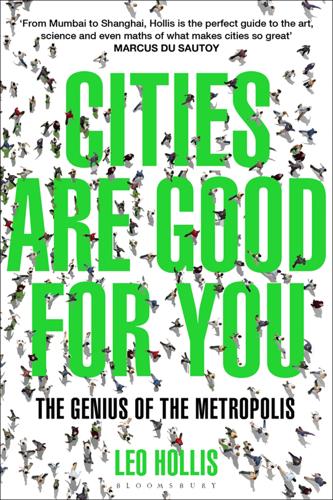
Cities Are Good for You: The Genius of the Metropolis
by
Leo Hollis
Published 31 Mar 2013
But the cost of parking could be one way to dissuade people from using their cars in the city, and the reduction of parking bays and the high price for leaving one’s car in the city centre can have very positive effects on congestion. In 2009 the San Francisco Metropolitan Transportation Agency produced a report on parking restrictions following the idea of ‘Parking Guru’ Donald Shoup. In his book The High Price of Free Parking, Shoup had shown how inefficient free parking could be and how much energy was used searching for a space in a popular neighbourhood. Shoup advises that parking, because it is a fixed supply, should be priced according to demand. In addition, information on where parking is available needs to be displayed on roadside boards, so that drivers know where to go to rather than waste time on a random search for free spaces.